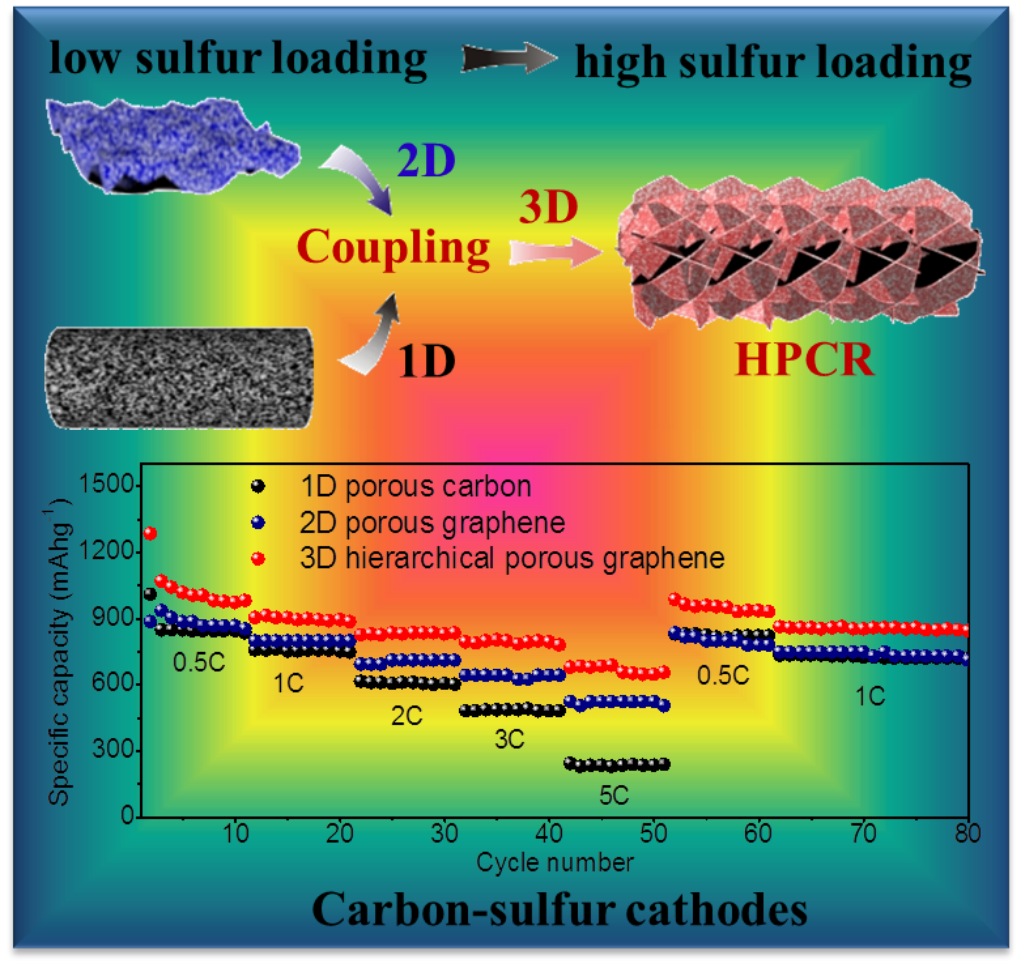Recently, a research team led by Prof. Zheng Nanfeng and Assist Prof. Fang Xiaoliang from XMU, create a novel three dimensional hierarchically porous carbon material – HPCR - through template method. This new 3D material is composed of 1D hierarchically carbon and ultra-thin slices of 2D hierarchically carbon nano-material vertically assembled. HPCR not only has high specific surface area (2226cm2g–1)and ultralarge pore volume(4.9cm3g-1),but also ultra pore structure. Its advantages in lithium-sulfur battery are as below:

The excellent performance of HPCP attribute to high specific surface area and ultralarge pore volume, which is able to load more sulfur within the structure. The open large pore volume structure ensure better transition of electron and ion. the HPCR-S composite with 88.8 wt% sulfur exhibits excellent rate performance (545 mAh g-1 at 3 C, 1 C = 1675 mA g-1) and cycling stability (632mAh g-1 after 200 cycles at 1 C). Due to high sulfur loaded, the sulfur composition from anode is up to 71%(coating density1.95g cm-3 ) with the max stable volume ratio as 1050 mAh cm–3 at 0.5C performance rate.
This work was supported by MOST of China, NSFC, State Key Laboratory for Physical Chemistry of Solid Surfaces, Collaborative Innovation Center of Chemistry for Energy Materials, and Engineering Research Center for Nano-Preparation Technology of Fujian Province.
( http://onlinelibrary.wiley.com/doi/10.1002/adfm.201601897/epdf)